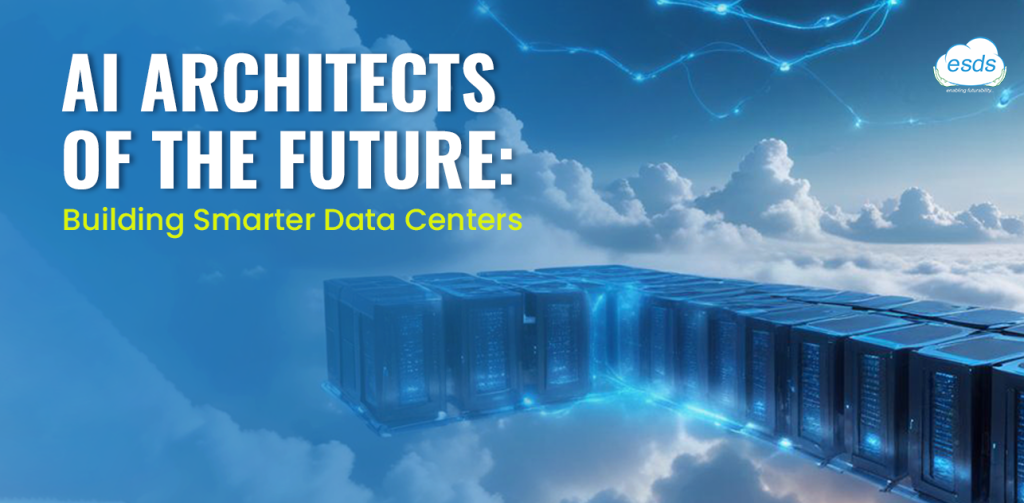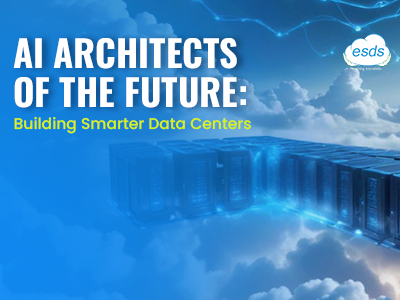AI Architects of the Future: Building Smarter Data Centers

Artificial Intelligence (AI) has been disrupting businesses and sectors for quite some time, boosting performance and operational efficiencies. The data center industry is no exception. Data is important for any organization today, and effectively managing that data is equally important. Once filtered and processed, the collected data is crucial for making strategic business decisions.
In recent years, automation tools for data processing have been infused with high investment as companies shift toward hyperscale data centers to enhance their respective IT infrastructure. The massive increase in the volume of data has required this very hyperscale data center to keep innovating by integrating the latest AI technologies to run tasks autonomously.
Automation technologies in data centers have been introduced previously. For example, Google uses DeepMind AI for cooling. However, companies have yet to implement AI/ML fully. Factors such as distrust in technology have hindered many organizations from embracing AI. While the most recognized use cases for AI deployment in data centers include temperature control and predictive maintenance, AI can potentially improve the efficiency of a data center infrastructure, which is more than widely known. In 2022, global electricity demand for data centers, artificial intelligence, and cryptocurrencies reached 460 terawatt-hours.
Let’s look at AI use cases in data centers that will change the industry’s future.
• Managing Workloads
As data center workloads expand due to greater data, many firms look to artificial intelligence (AI) to enhance efficiency and save costs. AI can assist in determining the mobility of workloads in real-time in a hybrid environment, allowing for the selection of the most efficient infrastructure, such as cloud, on-premise, or edge. As AI becomes more widespread in the data center market, organizations seek new methods to manage their data, allowing them to use advanced AI techniques and analytics.
According to Gartner, by 2025, 70% of enterprises will focus on big to small and broad data. This shift, driven by AI, will provide additional context for analytics while reassuring organizations about the efficiency of AI in reducing data consumption. The small data provides better insights with less data and also gives broad data to study the volume data and unstructured data.
• Mitigating people shortage
Automated technologies in data centers promise to reduce the need for human intervention in routine tasks. This frees staff from tedious activities such as storage optimization, cooling distribution, and security settings, allowing them to focus on more critical issues.
• Maximizing power efficiencies
Power consumption is a major challenge for data centers globally. Energy prices rise by at least 10% yearly; therefore, employing high-density servers may be more ecologically friendly. One answer to this problem might be to implement AI/ML technology. Data center systems generate substantial heat, and traditional cooling techniques regulated by the Building Management System (BMS) may be more energy efficient.
Implementing AI-based power management can optimize cooling systems by analyzing historical data and creating a Power Usage Effectiveness (PUE) prediction model. This method can reduce the power costs and improve efficiency. Moreover, ESDS makes use of N+N redundant uninterruptible power supplies (UPS). This will ensure if one UPS fails, another can take over and will maintain the continuous power supply.
• Enhancing security
Several events occur simultaneously in a hyperscale data center, making it practically difficult for people to monitor and provide security warnings efficiently. AI-powered technologies have proven beneficial in this setting. For example, picture and sound recognition technologies are widely used to improve the physical security of data centers.
Artificial Intelligence analytics uses video surveillance solutions to analyze and capture movements. Additionally, machine learning is also used for anomaly detection, letting the system know and recognize the patterns and identify abnormalities.
Without automation, maintaining the physical security of a data center that might cover acres would need hundreds of security professionals working around the clock. This approach is especially beneficial in predictive analysis since it allows the AI system to flag unexpected events for review before a system fails.
• Fire Protection Systems
For every organization, it is important to ensure the safety of the data center that’s where the ESDSs give top priority. ESDS uses advanced fire protection which detects and suppresses fires quickly and effectively. Additionally, ESDS also provides the Very Early Warning Aspirating Smoke Detection System to detect the smoke or the fire.
In addition to VESDA, ESDS uses an addressable smoke detection system. This advanced technology can determine the specific site of a fire, allowing for a rapid and focused reaction to reduce the danger and prevent the fire from spreading. Such accuracy in detection is critical for reducing damage and guaranteeing the safety of the data center environment.
The fire suppression system improves fire safety procedures in ESDS data centers. It is designed to extinguish flames quickly and safely, reaching extinguishing levels in 10 seconds or less. This method reduces equipment damage lowers downtime, and also allows the data center to continue operations smoothly.
Final Thoughts
Artificial Intelligence will drive future data centers, and most facility operations will be automated. While currently, these technologies are primarily used by a few large hyperscalers and enterprises, they will become more widespread as technology improves, trust increases, and costs decrease.
- Why Do You Need Vulnerability Assessment and Penetration Testing? - March 13, 2025
- How to Choose the Right Private Cloud Service Provider in 2025? - February 27, 2025
- Why Cloud Migration is Essential: Benefits, Challenges, and Expert Tips - February 24, 2025
